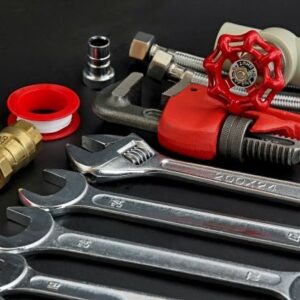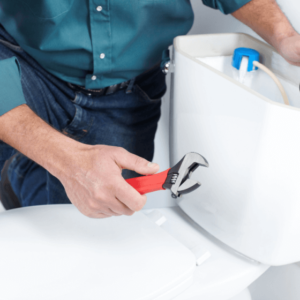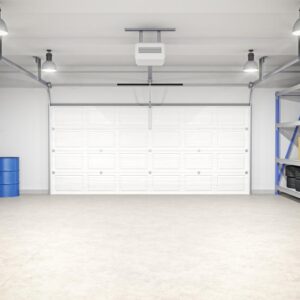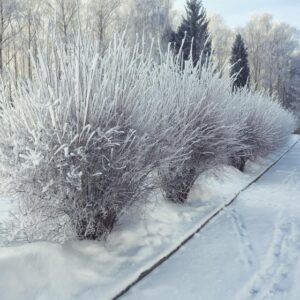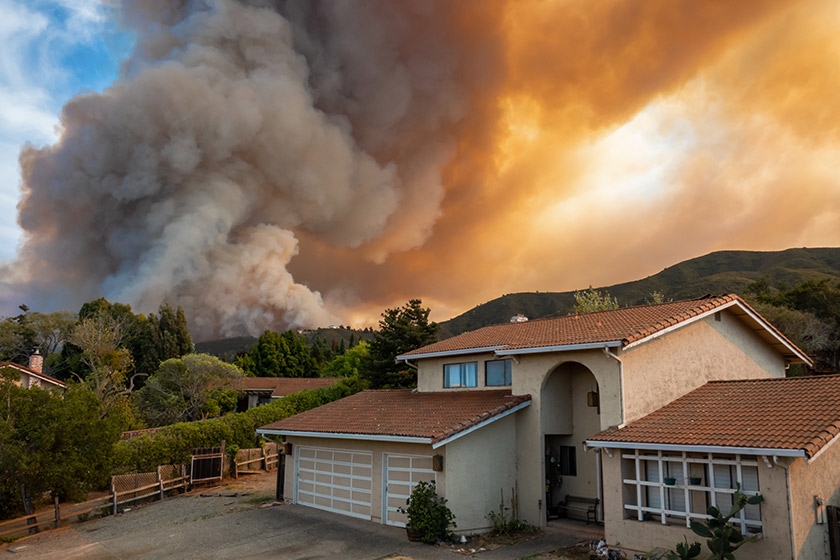About 4.5 million homes are at risk of being burned in a wildfire, and nearly one-half are in California. In 2021, California, Texas and North Carolina had the most wildfires. Anyone who lives in an area where there is significant risk of a wildfire must be especially vigilant about preparedness. However, some occasionally happen in places where they are unusual. Every homeowner can take steps to reduce the risks of losing a home to a wildfire. Are you ready to learn how to prepare for fire season or wildfires in general? This guide will help you understand fire season and will offer valuable preparation tips.
When Is Wildfire Season?
Historically, fire season has commonly been associated with the summer months. However, the most common time for wildfires can vary in different parts of the county. For example, wildfires are more common in Wisconsin in the spring. In some areas, they are more common during the summer. Despite what historical and current reports show, any season can be a risk. Dry weather is a common culprit of wildfires. A dry landscape is more prone to catch fire, and wind can help it spread. Many climates tend to be drier in the summer because of the intense heat from the sun. Fires from dryness in the winter happen as well.
Because there are more fires today, the USDA Forest Service is preparing employees for year-long risks. This is because fall rain trends are appearing later, and snow is melting earlier. There are other factors, too. While fire season used to be a four-month summer period, it is at least 78 days longer now.] To make matters worse, smoke from wildfires may negatively affect cloud droplets and reduce rainfall. The negative impact of wildfires affects homeowners, communities and the world. Because of this, it is important to treat every season like a potential fire season.
How to Protect Your Property From Wildfires
How can you prepare for a wildfire? One important part of wildfire preparedness is making sure your home is better protected. Get your home ready for wildfires with these tips.
Remove Dead Branches and Leaves
Leaves and dead branches tend to dry out quickly in the summer sun. Even during a dry spell in winter, they can turn into dry fire hazards. When leaves start falling, make sure you regularly rake them. Clean away leaves and debris from gutters and the roof. Also, be sure to remove any branches, leaves or twigs from around the house before winter. Do this regularly during the summer as well. If you keep a summer garden, be sure to remove dead plants in the fall or winter. Use trimmers to cut away branches that hang over your roof. Branches should be at least 10 feet away from your chimney.
Thin Out Shrubs and Trees
Trees have great visual appeal for landscaping. However, they should not be too close to your home or to other trees. If they are within 30 feet of your property, make sure they are 10 feet from one another. Keep any flammable plants in plant boxes near windows trimmed and watered. You should also prune shrubs regularly with pruners.
Separate Flammable Items
Separate other non-vegetation items outdoors that may spread fire or catch fire. They should not be near trees, shrubs or plant boxes. Some examples of such items include porch swings, patio furniture, fire pits and grills. It is better to keep wood piles between 30 and 100 feet away from your home. They should also be far enough away from sheds or other property buildings.
Control Weeds
Tall weeds can be fire hazards. Some grow quickly, and it can be easy to forget them when it is too hot to work outdoors. Try to make time in the morning or evening to remove them. You may also want to use a weed control product to limit them.
Mow Regularly
Whenever it is warm enough for grass to grow, keep it shorter by mowing regularly with a lawn mower. Four inches is the maximum length it should reach before mowing. Also, keep the grass watered if possible. Drought restrictions may make this challenging in some areas.
Other Things to Consider During Wildfire Season
In addition to wildfire preparedness on your property, consider evacuation plans and general precautions. Those are both important components of wildfire safety.
Evacuation and the 5 Ps of Preparation
If there is an evacuation order, you must follow it. Learn your evacuation zone and information ahead of time. Start your evacuation planning before there is a fire danger. Giving yourself more time allows you to plan better and ensure everything you need is accessible. The Federal Emergency Management Agency recommends five points that are helpful in developing a wildfire evacuation checklist. These are the Ps of wildfire preparation:
- People
- Papers
- Prescriptions
- Personal needs
- Priceless items
In the event of an evacuation, make sure everyone is present before leaving. Birth certificates, passports and other important documents are also helpful to bring. Be sure to have prescriptions ready to quickly grab and pack. Items for personal needs may be contact cases, medical devices or other things that are essential. Family heirlooms, wedding jewelry and other sentimental valuables are priceless items. Know where these items are at all times. Move them to an accessible place when there is a fire danger. Also, discuss your wildfire evacuation plan with all family members or roommates.
Important Wildfire Precautions
How do you prepare for a wildfire? No matter how much you prepare, wildfires are inevitable in some regions. While some tips apply to situations with an active fire, others apply at all times. These are some wildfire safety tips:
- When doing renovations, try to use fire-resistant materials.
- Invest in a good hose that can reach any part of your property.
- Choose a room in your home that can be sealed off from outdoor air if necessary.
- Keep every flammable outdoor item at least 30 feet away from your house.
- If there is a fire in the distance, wear an appropriate N95 mask.
- Keep your phone charged and on whenever there is a fire danger.
- Stay current with emergency alerts.
- Keep ample emergency food and water at home and in vehicles for potential evacuation.
The sealed-off room is a good place to go if there is smoke but no evacuation order. If you return after an evacuation, only return when authorities permit it. Also, wear a good respirator as you clean any smoke-damaged areas. Additionally, wear protective clothing and gear.
Essential Wildfire Precautions
Many people wonder what to do during a wildfire if they are trapped. If you are in a vehicle, find an area without vegetation. Turn off the vents, roll up the windows and find a blanket or jacket if possible. Cover yourself with it, lie on the vehicle floor and call 911. If you are on foot, try to find an area without vegetation. Lie on the ground, and cover yourself if possible. Call 911 if you have your phone.
Now that you know how to prepare for fire season, you are ready to develop your own plan. Head to your nearest True Value to find everything you need to prepare and stay safe during a wildfire.

